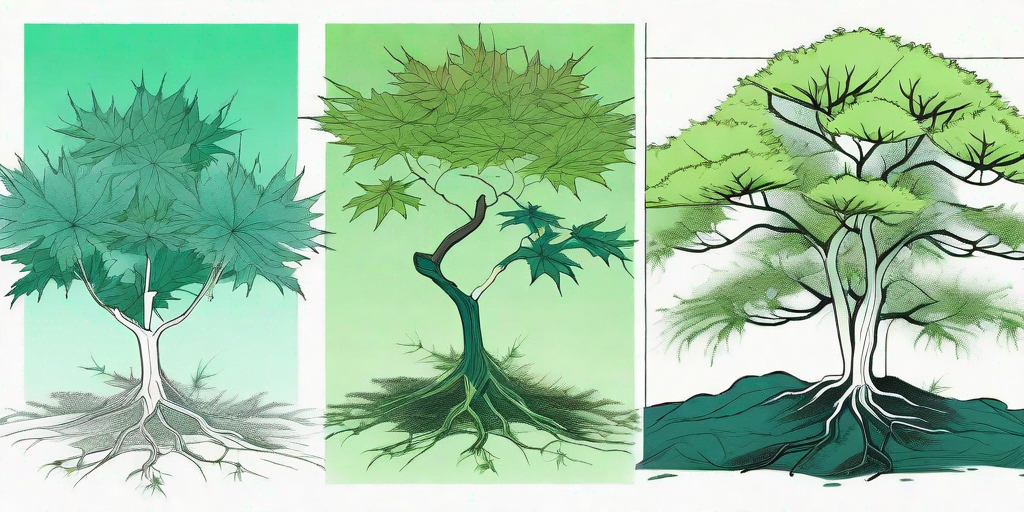
Greetings, fellow tree enthusiasts! If you're here, it's likely because you have a keen interest in the health and well-being of your Japanese Maple trees. Or, you might just be a curious soul who loves to learn about everything, including tree diseases. Either way, you're in the right place! Let's dive into the world of Japanese Maple tree diseases and learn how to spot the signs, because, as the old saying goes, "An ounce of prevention is worth a pound of cure."
Understanding Japanese Maple Trees
Before we delve into the nitty-gritty of diseases, let's take a moment to appreciate the beauty and uniqueness of Japanese Maple trees. Known scientifically as Acer palmatum, these trees are native to Japan, Korea, and China, and are renowned for their stunning fall foliage. But like all living things, they can fall prey to various diseases. So, let's arm ourselves with knowledge and become the best tree doctors we can be!
Japanese Maple trees are generally hardy, but they are not invincible. They can be affected by a variety of diseases, ranging from fungal infections to viral diseases. The key to managing these diseases is early detection and treatment. So, put on your detective hat, and let's get started!
Common Diseases and How to Spot Them
Now that we've got a basic understanding of Japanese Maple trees, let's dive into the common diseases that can affect them. Remember, a good tree doctor is always on the lookout for symptoms!
Let's start with the most common diseases and their symptoms:
Verticillium Wilt
Verticillium Wilt is a soil-borne fungal disease that can cause severe damage to your Japanese Maple. The first signs of this disease are yellowing leaves and a general wilting of the tree. You might also notice that one side of the tree appears more affected than the other. If left untreated, this disease can lead to the death of the tree.
Unfortunately, there's no cure for Verticillium Wilt. But don't despair! With proper care and early detection, you can manage the disease and keep your tree healthy.
Anthracnose
Anthracnose is another fungal disease that can affect your Japanese Maple. This disease causes brown or tan spots on the leaves, often leading to defoliation. The disease can also cause twig dieback and cankers on the branches.
Fortunately, Anthracnose can be managed with proper sanitation and fungicide treatments. So, if you spot these symptoms, act quickly!
Preventing Diseases
Now that we know what to look for, let's talk about prevention. After all, the best way to deal with a disease is to prevent it from happening in the first place!
Here are some tips to keep your Japanese Maple healthy and disease-free:
- Ensure proper watering: Overwatering can lead to root rot, while underwatering can stress the tree and make it more susceptible to diseases.
- Prune correctly: Pruning helps improve air circulation and sunlight penetration, reducing the chances of fungal diseases.
- Use clean tools: Always clean your pruning tools before and after use to prevent the spread of diseases.
- Maintain a clean environment: Regularly clean up fallen leaves and debris around your tree to prevent the growth of fungi and other pathogens.
Frequently Asked Questions
Can a diseased Japanese Maple tree be saved?
Yes, in many cases, a diseased Japanese Maple tree can be saved, especially if the disease is detected and treated early. However, some diseases, like Verticillium Wilt, have no cure and can only be managed.
How often should I inspect my Japanese Maple for signs of disease?
Regular inspections are key to early detection. It's a good idea to inspect your tree at least once a month, but more frequent inspections may be necessary during rainy seasons when fungal diseases are more prevalent.
What should I do if I suspect my Japanese Maple has a disease?
If you suspect your tree has a disease, the first step is to correctly identify the disease. Once you've identified the disease, you can take the appropriate steps to manage it. If you're unsure, it's always a good idea to consult with a professional arborist.
So there you have it, folks! A comprehensive guide to spotting the signs of Japanese Maple tree diseases. Remember, the health of your tree is in your hands. So, keep a keen eye out for symptoms, act quickly if you spot any, and your Japanese Maple will thank you for it!















